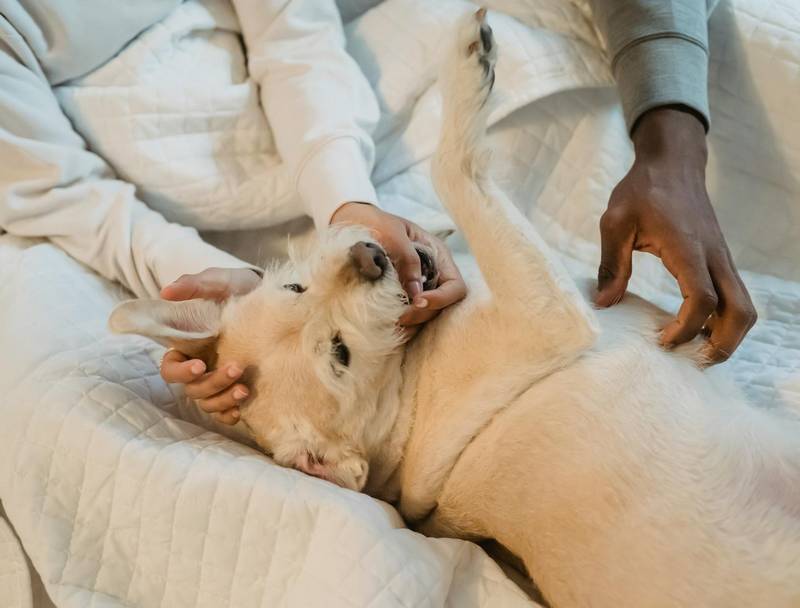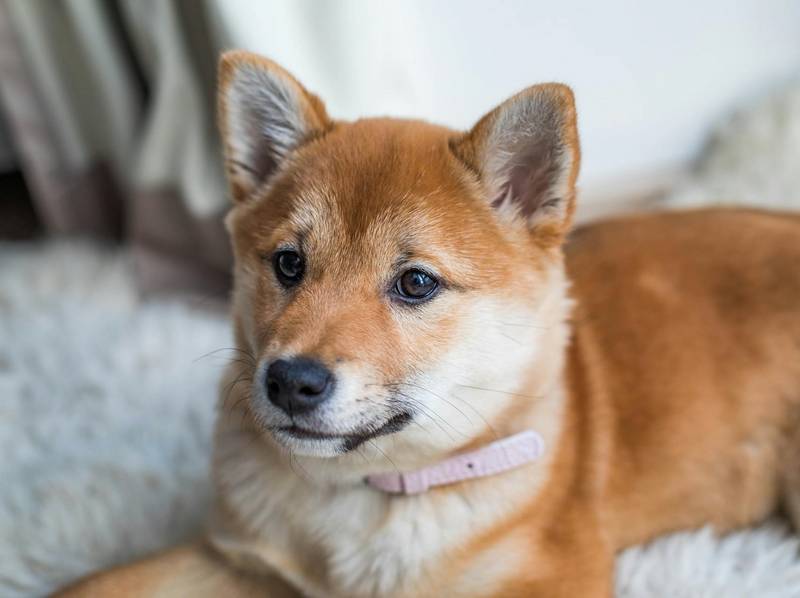My Dog Growled at Me When I Moved Her! (Here’s What to Do!)
“My dog growled at me when I moved her!” It’s a situation that can leave you feeling uneasy, confused, or even hurt. The first step to addressing this issue will be understanding why your dog growls when you move them. We’ll help you figure out if it’s a sign of discomfort due to a medical condition or a behavioral reaction based on their mood or environment.
Once we’ve explained why dogs growl when moved (covering both male and female dogs, including puppies) we can then teach you how to best respond to your situation safely and compassionately. We’ll also go over things like if male dogs are more aggressive when being moved. Let’s get started!
My Dog Growled at Me When I Moved Her

If your dog growled at you when you moved her, it’s a clear communication signal indicating discomfort, fear, or even pain. This behavior serves as a warning and is a dog’s way of telling you that they’re not okay with what’s happening. Understanding the reason behind the growl is crucial for addressing the behavior appropriately and ensuring the safety and well-being of both you and your dog.
Why Does My Dog Growl When I Move Her?
Your dog growls when you move her primarily as a reaction to feeling threatened, uncomfortable, or in pain. This could be a form of resource guarding, a sign of fear or anxiety, or a response to physical discomfort.
It’s important to think about the context of the situation and your dog’s body language to help determine the cause and guide your response.
Dog Growls When Moved: Medical or Behavioral?
If your dog growls when moved, try looking for the following signs to determine if it’s due to medical or behavioral issues:
- Medical: Signs of pain such as limping, reluctance to move, changes in eating habits, or vocalizations when touched. If these are present, contact your veterinarian right away.
- Behavioral: Growling only in specific situations (like being after taking your spot on the couch), but otherwise showing normal movement and activity levels. This may indicate resource guarding or discomfort with being handled.
Dog Growling When Moved, What Do I Do?
If your dog growls when moved, taking steps to address the behavior is essential:
- Contact a veterinarian: Rule out any medical reasons for the growling, especially if you notice signs of pain.
- Train handling tolerance: Gradually get your dog used to being touched and moved with positive reinforcement. Offer treats and praise for calm behavior during handling.
- Use commands: Teach commands like “off” to encourage voluntary movement without needing to physically move your dog. Train it by holding a treat in your hand while saying “off.” Once they comply, immediately give them the treat along with praise. Use the treat as a lure if they don’t respond at first. Repeat regularly, gradually reducing the use of treats.
Your dog growling when moved signals discomfort or distress that should not be ignored. By understanding whether the cause is medical or behavioral, you can take appropriate steps to address the issue, ensuring your dog’s comfort and safety while maintaining a positive, respectful relationship.
While the tolerance training and “off” command will help, it’s important to remember that the underlying behavioral issues (fear, anxiety, resource guarding, etc.) that may have been causing all of this to begin with will still be present. And until you address those, any positive changes you see will only be temporary.
“Well, how do I make these changes last?”
By getting your dog to truly choose to follow your direction, that’s how. I tried many times to write out how you can do that before deciding it made more sense to just link you to the free video series that explains it better than I’d ever be able to.
The series is by a man named Dan who is one of the world’s leading dog obedience trainers. In it, he teaches you how to put an end to things like your dog growling when you move her and all other misbehavior using his fast and easy-to-follow methods.
In the first video, Dan will reveal to you why the two most common methods of dog training only doom you to failure. You can watch the video now by clicking here. Follow the proven system he’ll show you in his series and you’ll never have to spend another second worrying about why your dog growls when you move him ever again!
My Dog Growls at Me When I Move Him

If your dog growls when you move him, it’s a form of communication indicating discomfort, fear, or even pain. This behavior is a dog’s way of expressing that they’re not comfortable with the current interaction, which could stem from various reasons including health issues, fear, or a learned behavior.
Why Does My Dog Growl When I Move Him?
Your dog growls when you move him as a reaction to feeling threatened or uncomfortable with the action. This could be due to several factors such as resource guarding, their sleep startle reflex if they were woken up, or even physical pain.
It’s important to observe the context and other body language cues from your dog to accurately identify the cause and adjust your approach accordingly. We go over the signs of each you should look for in the first section.
My Puppy Growls at Me When I Move Him
If your puppy growls when you move him, it often indicates a lack of comfort or familiarity with being handled. Puppies are still learning about the world and establishing trust with their owners and growling at you for the first time can be tough. Consistent, gentle handling combined with positive reinforcement can help build their confidence and reduce growling over time.
Are Male Dogs More Aggressive About Being Moved?
There’s a common misconception that male dogs may be more aggressive about being moved than females. However, aggression and discomfort with being moved are not behaviors limited by gender. They can occur in any dog, regardless of sex, and are more influenced by the individual dog’s personality, past experiences, and training.
Factors such as socialization, health, and the dog’s relationship with you play a more significant role in how they react to being moved than their gender.
Your dog growling when moved is a signal from them that should not be ignored. It’s important to understand the underlying reasons for this behavior, whether it’s due to medical issues, fear, or a need for more positive handling experiences. Learn the signs for each in the first section.
By addressing these issues through proper training, veterinary care, and understanding, you can help your dog feel more comfortable and secure, fostering a stronger bond between you both.
I’m sure you’re ready to begin now that you have all of your questions about why your dog growled when you moved her answered, so I’ll let you get started on things. Good luck, and thanks for taking a look at our article “My Dog Growled at Me When I Moved Her! (Here’s What to Do!)”.





